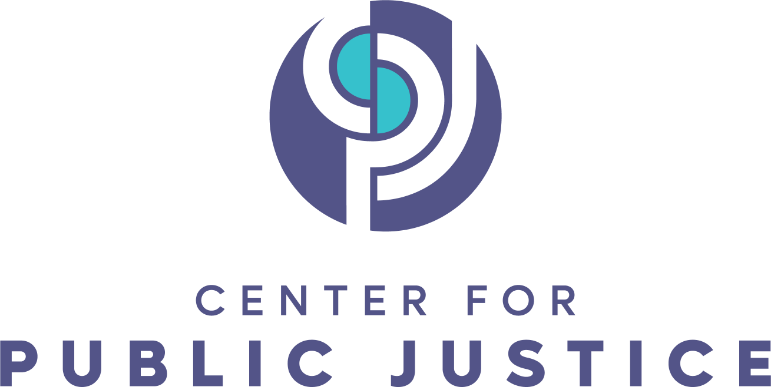An April 9 presidential directive instructs federal agencies to repeal and replace, without utilizing the usual “notice and comment” process, if those regulations are deemed to violate the U.S. Constitution as recently reinterpreted by the U.S. Supreme Court. Ten precedent-changing Court decisions are listed, including two that expand religious freedom. The directive supplements President Trump’s Executive Order 14219 (February 19, 2025), which gave agencies 60 days to review all regulations and identify those that should be changed or abolished because they do not align with the Constitution, congressional statutes, Administration policy, or principles of good governance. That Executive Order, however, directed officials to utilize the normal regulatory process in modifying or eliminating regulations regarded as out of line. Other administration initiatives to challenge mistaken or harmful regulations also use the regular process. Although bypassing the normal procedure, as required in some cases by the April 9 directive, may seem to achieve a good end more quickly, it could instead lead to complications for faith-based services and potential court challenges.
Most of the Supreme Court rulings named in the presidential directive concern economic or environmental matters. One (Students for Fair Admissions v. Harvard, 2023) addresses racial discrimination. Two rulings are religious freedom decisions. The decision in Carson v. Makin (2022), a case about Maine’s high-school tuition reimbursement program, emphasizes the principle that, when a government funds private organizations, it may not exclude religious organizations because their programs include religious teaching and activities. Roman Catholic Diocese of Brooklyn v. Cuomo (2020), a COVID-era decision about occupancy limits in houses of worship, emphasized that governments may not treat religious practices and institutions less favorably than their secular counterparts. These decisions, and especially Carson v. Makin, are important milestones in the Supreme Court’s several-decade journey in reinterpreting the First Amendment’s Religion Clauses, moving from requiring government to disfavor religion in the public square to obligating government to afford equal treatment to religious organizations and religious exercise.
The standard process for promulgating, rescinding, or modifying regulations is governed by the Administrative Procedures Act. It is a multi-stage and lengthy process. Importantly, it gives affected groups and the public the opportunity to comment on proposed changes and requires the government to respond to the comments. Comments may convince an agency that changes to its draft proposal will better achieve its goals, that a proposed regulation is not worth the burden it will impose, or that the Constitution or court decisions necessitate a modified rule or no regulation at all. This open process improves regulations and promotes adherence to constitutional principles—in principle. A major problem is that an agency, due to inattention or choice, may not even seek to update or eliminate regulations that conflict with new Supreme Court decisions.
The April 9 directive notes that regulations rendered obsolete by a new Supreme Court decision but not changed or rescinded by an agency are costly. They may wrongly constrict freedom, require unconstitutional action, or bog down the economy. The directive argues that, if a regulation conflicts with a changed Supreme Court reading of the Constitution, that regulation has become an unlawful, unconstitutional, requirement that no one should have to follow, even if the regulation has not been modified or rescinded. And it notes that the Administrative Procedure Act includes a “good cause” exception to the normal notice and comment procedure. “Agencies,” the directive says, “thus have ample cause and the legal authority to immediately repeal unlawful regulations.” Moreover, in the case of these “facially unlawful” regulations, agencies “shall finalize rules without notice and comment.”
In practice, this means if an agency decides that a regulation conflicts with a Supreme Court ruling, it need not publicly propose a change to or the elimination of a regulation and then solicit and respond to public comment. It should simply get rid of the regulation. And, if the agency deems it to be necessary, it should promulgate a revised regulation, again without soliciting and responding to public comment.
This sidestepping of the notice and comment process when a regulation plainly conflicts with an unambiguous Supreme Court principle makes perfect sense: an unconstitutional command should not be enforced by any government agency. Yet, just how a Supreme Court principle must be applied is not self-evident in all instances, and neither is it always obvious how laws or regulations must change in response to a new precedent.
Will Charitable Choice and Equal Treatment Regulations Be Changed Without Public Input?
These complexities are evident in relation to Carson v. Makin decision, one of the two religious freedom rulings among the recent Supreme Court decisions listed in the April 9 directive. The April 9 Fact Sheet explains that Carson v. Makin “held that a law excluding religious schools from participating in Maine’s school-voucher program violated the Free Exercise Clause.” The Fact Sheet goes on: “Agencies accordingly must review their regulations to ensure equal treatment of religious institutions vis-à-vis secular institutions for the purposes of funding and access to public benefits.” Maine’s rules excluded schools religious in teaching and not only in name. Thus, the Court decision seems to require the elimination of grant regulations that prohibit recipients, including faith-based organizations, from including religious teaching and activities within grant-funded programs.
This requirement to exclude religion is, in fact, part of government funding rules, stemming back to Charitable Choice laws that opened up new opportunities for faith-based organizations to compete for federal support. These Charitable Choice laws and the subsequent Equal Treatment regulations that applied across federal funding set out two funding patterns.
Indirect funding (e.g., vouchers): A family, student, or patient is authorized to choose from a range of providers, some offering services that incorporate religion and others secular services, with government reimbursing the chosen provider.
Direct funding (e.g., grants or contracts): The government awards funds to a single provider or perhaps two, with no attempt to give beneficiaries a choice among programs that include religion and those that do not. In these circumstances, the rules require that the programs exclude religious teaching and activities—eligion that a beneficiary could not avoid when receiving the funded services. The rules, however, specifically protected the right of a faith-based provider to maintain other religious programming and to invite a beneficiary to participate in it. This restriction on religion no doubt resulted in the exclusion from funding of some faith-based providers because their programs do include religion. But without the restriction, beneficiaries could be forced into religion against their own convictions or, to avoid this, miss out on a service they were supposed to be able to receive.
Is the “direct” funding religion restriction outlawed by Carson v. Makin? Consider what the Fact Sheet itself notes: Carson v. Makin addresses a “school-voucher program,” not a grant funding program. Families in rural Maine had a choice among schools, and the state could not claim that it was protecting families’ religious-exercise right not to be involved in religion by pushing out all schools that offered religious curricula. The Court did not rule that government officials may award a grant or contract to a faith-based organization in a locality without making any arrangement for a secular alternative and yet authorize that organization to incorporate religion into the government-funded service.
Faith-inclusive programs certainly ought not to be excluded from government funding; indeed, they may be the most effective for some or many beneficiaries, and the Constitution does require equal treatment. But neither should a person who is supposed to be able to receive a government-funded service be forced to participate in unwanted religion as the price of receiving the service.
The first Trump administration inclined to the view that the Carson v. Macon decision requires no exclusion from funding of faith-based organizations, however much religion may be in the services they offer. Accordingly, it modified the funding regulations so that a faith-based provider with religion-filled services was eligible for federal funding as long as several providers were funded, even if none of them offered non-religious services. (Confusingly, its revised rules still maintained a “direct” funding regulation requiring the exclusion of religion.) The Biden administration reversed the Trump change in the name of protecting beneficiaries from unchosen religion.
Just how the funding regulations must be modified in light of Carson v. Macon is not obvious. Much or most government funding is “direct”—the award of a grant or contract to a single or a few providers in a locality without assurance that beneficiaries will have a secular choice. But Carson v. Macon involved school vouchers, an “indirect” funding system that specifically has multiple choices, including non-religious options.
Should federal agencies, in response to the April 9 directive, simply eliminate the Charitable Choice/Equal Treatment “direct” funding restriction on religion within government-funded programs, ignoring that the First Amendment’s protection of free exercise incorporates the right not to be involved in religion? That would be a misinterpretation of the implications of Carson v. Macon. Agencies ought to propose new funding regulations that transcend the obsolescent “direct” vs. “indirect” dichotomy, while robustly honoring the constitutional right of faith-based organizations to be funded on an equal basis with secular organizations. At the same time, these regulations should ensure that both beneficiaries who object to religion and those who seek it can have equal access to suitable government-funded services. The Carson v. Macon ruling necessitates revision of the funding regulations via a thorough notice and comment process, not a bypassing of that process.
Stanley Carlson-Thies is the Founder and Senior Director of the Institutional Religious Freedom Alliance (IRFA), a program of the Center for Public Justice.



